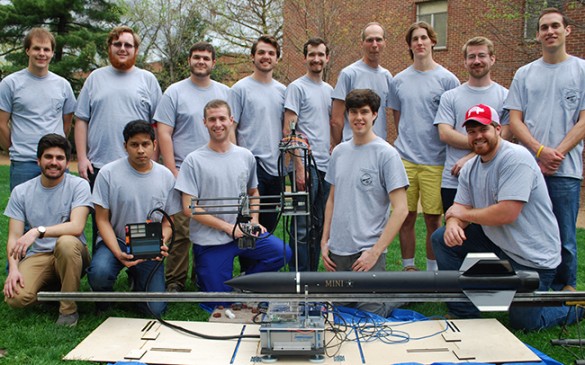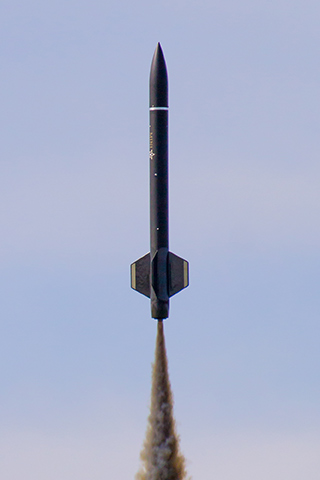Vanderbilt rocketeers continued their winning ways in this year’s NASA Student Launch competition.
Vanderbilt’s Aerospace Club, which has swept the annual event the last two years, put in a strong showing this year at the competition, which took place on April 11 at Bragg Farms in Toney, Alabama, near NASA’s Marshall Space Flight Center in Huntsville. A total of 31 university teams participated.
The basic challenge is to build a rocket that will fly to a target altitude of 3,000 feet. But there are a number of other elements to the contest as well, including vehicle design, payload design, project review, website and educational engagement program. This year the payload design category came with a new twist: the requirement to build an automated payload installation system. The overall winner of the competition will be announced on May 11.

This year the Vanderbilt team, which has always been particularly strong in the payload category, captured the top prize for their autonomous ground support equipment (AGSE) robot in the payload design category. It is the fifth payload design award in the eight years the club has participated in the national competition.
For the third time, the club won the website design award for “creatively designing and managing the most efficient and professional website for the promotion of student launch activities.”
Since 2007 the club has collected a total of 12 individual excellence awards.
The race for the national title this year is between the teams from Vanderbilt and the University of Louisville, according to team member Frederick Folz, a mechanical engineering senior: “Louisville has chalked up awards in the rocket design and the project review categories and the final decision will come down to the comprehensive review of several additional categories such as educational engagement, altitude, website design, etc.”
Some of the other university teams in the launch competition include Cornell, Arizona State, Georgia Tech, University of Illinois, Penn State, Northwestern, Northeastern, Florida, University of North Carolina-Charlotte, Iowa State, Notre Dame, and University of Massachusetts.
The smallest Mini V
University teams were asked to develop solutions to problems that would be encountered on Mars through the Mini-Mars Ascent Vehicle (Mini-MAV rocket) or the Maxi-Mars Ascent Vehicle (Maxi-MAV rocket) challenges. Both included an AGSE robot that autonomously places a simulated Mars soil sample in the rocket. The ascent vehicle is launched to a height of 3000 ft. and safely parachuted back to Earth.

“Very early on in the program, we decided to compete only in the Mini MAV competition to focus on a high-quality robotics and rocketry challenge for our team,” said Ben Gasser, a mechanical engineering graduate student who is the team’s project manager.
The Vanderbilt rocket – aptly titled Mini V – designed to be the smallest and lightest in the competition, took off into clear skies and reached an altitude of 2,929 ft, just 71 feet shy of the target altitude.
“We wanted to build the most competent robot that would work not only on earth, but also on the Martian soil. This required it to have the ability to assess the terrain and separate the payload sample from the background, identify the mother vehicle and then bring the sample to the vehicle along an autonomously decided path,” said Pranav Kumar, a graduate student in electrical engineering. He worked for eight months on the project alongside six mechanical engineering seniors, four underclassmen and three graduate students.
The club’s student launch program is directed by Amrutur Anilkumar, professor of the practice of mechanical engineering. Brian Lawson, a post-doctoral researcher in mechanical engineering, served as the team’s robotics mentor, and Robin Midgett, electronics technician in mechanical engineering, was the team’s rocketry mentor. The Vanderbilt Aerospace Club activities are supported by the Department of Mechanical Engineering and the Boeing Corporation.
Student Launch is managed by Marshall’s Academic Affairs Office and supported by the NASA Office of Education, the Human Explorations Operations Mission Directorate, NASA Centennial Challenges and Orbital ATK Propulsion Systems of Promontory, Utah.
For more information: www.vanderbilt.edu/usli